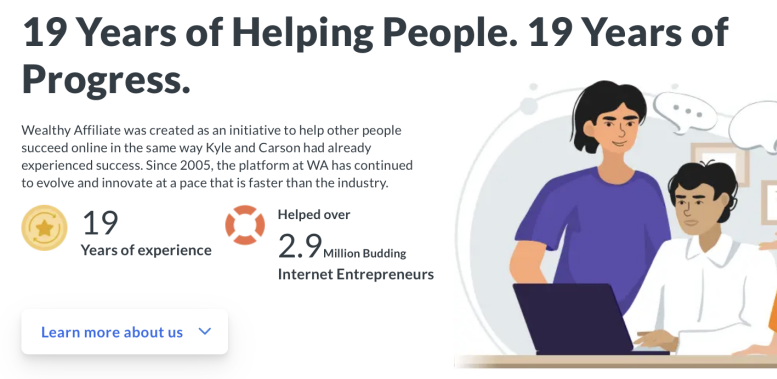Identifying your ideal customers can feel like finding a needle in a haystack, but it doesn’t have to be that hard. Knowing exactly who you’re talking to not only shapes your messaging but also makes your marketing dollars work their hardest.
Understanding your audience is critical; it goes beyond just knowing who they are. It’s about delving into their needs, their pain points, and what makes them tick. This deeper dive into the psyche of your customers is how you build loyal relationships and not just transactions.
Market research is your best friend here. It’s not just helpful; it’s essential. Surveys, focus groups, general research, and social media listening tools help gather insights into what your audience is buzzing about. Dive into past data and trends while keeping your eyes peeled for emerging patterns.
Tools like Google Analytics and Facebook Audience Insights can help gather demographic and interest-based data. These tools give you a clearer picture of who your customers are, what they want, and how they behave online. Think of this as the blueprint for crafting your marketing strategy with laser precision.
Neglecting Mobile Optimization

The number of people using their phones to browse the internet is skyrocketing daily, and if your site isn’t mobile-friendly, you’re probably missing out big time. Mobile optimization means ensuring your site is just as slick and functional on a phone as it is on a desktop.
An unoptimized mobile site wrecks your SEO. Google straight-up favors mobile-friendly websites in search results, so if your site clumsily loads on a phone, you can kiss that high search ranking goodbye. Simplifying navigation, speeding up loading times, and making content easily consumable on small screens are key aspects to optimize.
For the best mobile user experiences, think like your customers. What’s essential for a mobile visit? Quick navigation, readable text without zooming, and captivating visuals are all must-haves. Keep it simple, intuitive, and relevant.
Look at successful cases where businesses made a mobile-first approach their norm. Many companies saw a boost in engagement and conversion rates just by tweaking their mobile experience. These real-life successes make a solid argument for always thinking mobile first in your online strategy.
Ineffective Marketing Strategies

When your marketing strategy isn’t hitting home, it can feel like you’re throwing money into a black hole. Guess what? You are!
It’s super important to line up those strategies with your overall business objectives; otherwise, what’s the point?
One pitfall to dodge is launching campaigns that don’t resonate with your audience. That mismatch often results in a waste of resources and little to no return on investment. Instead, crafting campaigns that tell engaging stories can cut through the noise and capture attention.
Data analytics plays a crucial role in refining marketing efforts. With insights from tools like Google Analytics or social media metrics, you can tweak campaigns to better target and appeal to your audience’s preferences. Think of it like a road map that helps steer your strategies where they need to go.
Learning from brands that have nailed their marketing is key. Whether it’s a brilliant social media campaign or personalized email marketing, observing what’s working for others can spark ideas and strategies that you can adapt to your own needs. Focus on being authentic—your audience will thank you.
Overlooking the Importance of User Experience

User experience (UX) is all about how easy and pleasant it is for users to navigate and interact with your website. It’s not just icing on the cake; it’s a key ingredient that can make or break your online presence.
Poor UX can drive your customers straight into the arms of your competitors. Errors like convoluted navigation, slow load times, and cluttered interfaces make visitors bounce faster than you can blink. Prioritizing a seamless user journey ensures that once potential customers land on your site, they stick around and explore.
Feedback is golden. Regularly seeking out and integrating user feedback helps you spot UX flaws that you may have overlooked. Whether it’s through customer surveys or usability testing, these insights provide a clearer picture of where improvements are needed, and what changes can make the biggest impact.
Crafting a great user experience doesn’t have to be complex. Focus on clear layouts, intuitive navigation, and speedy page loads. Each touchpoint offers an opportunity to delight your users. When these elements sync up perfectly, your site becomes a joy to explore, encouraging visitors to return time and again.
Failure to Monitor and Adjust KPIs

Key Performance Indicators, or KPIs, are like your business’s report card—a clear look at how things are going. Ignoring them? That’s like running a race with your eyes closed.
When you don’t keep tabs on KPIs, you’re essentially making decisions in the dark. These metrics show where things are working and where they aren’t, giving you the chance to pivot before small issues become major roadblocks.
Performance tracking tools like Google Analytics, Tableau, or even simple Excel spreadsheets can help you stay on top of these key metrics. They provide real-time data so you can make informed decisions that keep your business on track.
Creating a feedback loop is super important. Regularly reviewing performance data and making necessary tweaks ensures you’re not just coasting but actively improving. It’s about adapting quickly to changes and continuously enhancing your strategies to meet your goals.
Lack of Adequate Support Structure: The Biggest Mistake
Having a support structure in place can be the cornerstone of success for any online business. Without it, you’re setting yourself up for unnecessary struggles and roadblocks, which can be damaging to growth and sustainability.
When businesses lack a solid support system, they often face challenges like burnout, decision fatigue, and costly mistakes. This absence of backup can slow down progress and make what should be a journey of growth feel like a slog uphill.
Which leads to my last point: Enter Wealthy Affiliate, a platform designed to bolster your online business efforts with robust support structures. It’s not just about tools but community, training, and resources that are all there to help you flourish.

The Wealthy Affiliate program provides everything all in one place. From tech support to ongoing training, hosting, domains, SEO-optimization, and much more, letting you focus on expanding your business without the constant worry of what might go wrong next. By using a system built for success, your business is better positioned to scale and thrive.
Not sure what online business to start? They’ll leverage AI to help you find one that can become profitable. All you have to do is put in the real work from there! (with lots of help along the way of course)
If you’re interested in giving it a try, learn more by clicking the image and I’d be happy to help you in any way I can! Or check out my full review here:
* The following is an affiliate link. It’s kinda in the name! If you sign up through these links, I may earn a commission at no extra cost to you! 🙂 *
Thank you for reading!

Learn more about me and my journey here!

